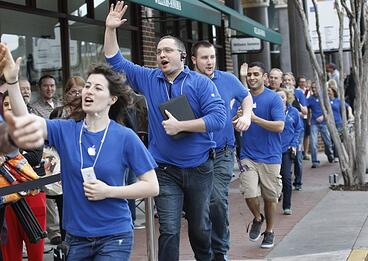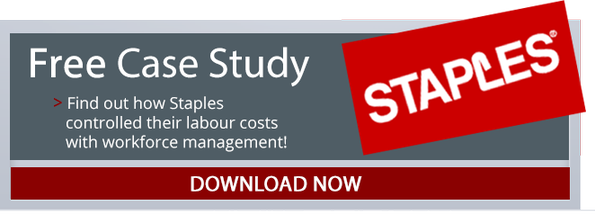
Learning how to measure productivity is no easy task and that rings even more true for the retail sector. Facing thin margins, high turnover, and varied sales cycles, many managers and owners rely more on feel than actual facts. By analyzing metrics, managers and owners can take the guesswork out of their business needs. These three metrics can help you increase workforce productivity in your own business.
Footfall Metrics
One of the metrics that every retail business needs to measure productivity is footfall metrics. Footfall metrics are the measure of potential sales by assessing how many people are interacting with the business on a given day. Footfall metrics include people who simply pass by the stores, people who enter but leave soon after, and those who spend a lot of time browsing but ultimately decide not to buy. Just like it sounds, footfall metrics are the amount of people walking by and into the business.
In terms of using this metric as a measure of productivity, businesses need to look at how many potential customers are entering the store and what interactions they are having with their retail workforce. If a customer wanders the whole store but is never approached by staff, they may leave based simply on the lack of interaction. If employees are unable to see customers enter the store, they may not be able to aid customers. Watching footfall patterns in a retail location can give businesses the information needed to address decreased productivity.
Employee Engagement Metrics
All too often, businesses focus on the customers' satisfaction with surveys, sales, and engagement studies without ever thinking twice about their own workforce. Gallup's 2013 State of the American Workplace found that US businesses lose $550B annually due to lack of employee engagement in the form of training, shrinkage, sick days, and simply not performing their job. Employee engagement is a core metric that businesses need to focus on to optimize and measure productivity. Engaged employees report fewer safety incidents, less theft, and lower turnover rates in addition to increased productivity.
Measuring employee engagement can save businesses significant costs over the year that wouldn't be adequately captured otherwise. Measuring workforce engagement is as simple as conducting an annual or biannual anonymous survey to determine what employees like and dislike about the organization. Analyzing that data can find simple fixes in workflow and company policy that can yield significantly increased productivity.
Conversion Metrics
Retail businesses that know how to measure productivity take a good hard look at their conversion metrics. Conversion metrics are a down and dirty look at how your employees turn a visitor into a customer and what profit that generates for the business. A simple conversion metric to measure workforce productivity is to determine how many total sales employees ring up per shift or hour. Simply knowing the average sales can help identify high-performers and employees that need additional help closing sales.
Basket size and ticket size are two other great metrics that can provide some needed insight into employee productivity. Basket size assesses how many items are sold to a single customer and ticket size the amount spent by a single customer. Identifying and rewarding those employees who attain excellent conversion rates increases employee engagement, while identifying those employees who struggle allows businesses to retrain their employees. Keeping a close eye on conversion metrics can help increase productivity from under-performing employees while rewarding and retaining high-performers.
